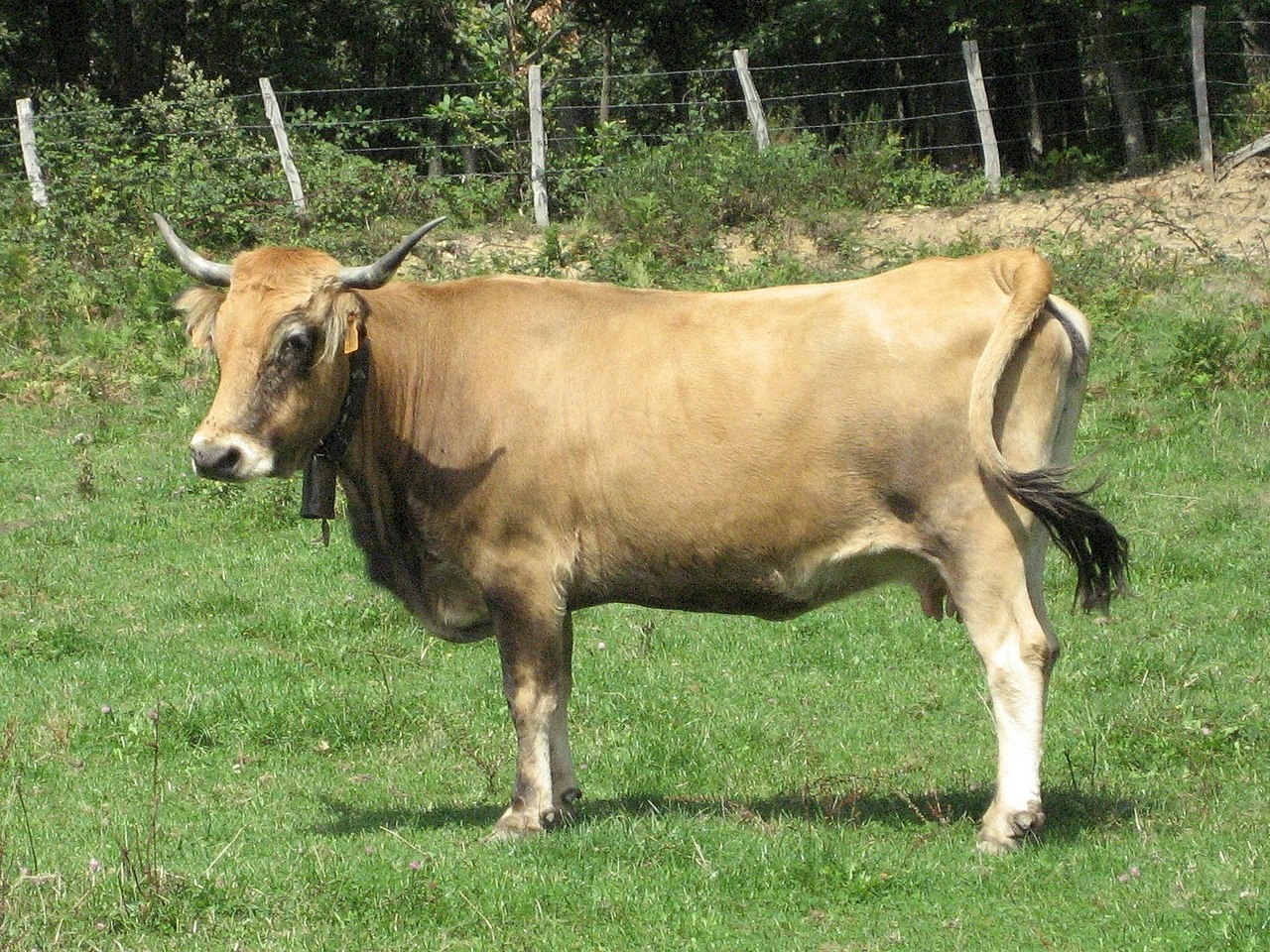The Monchina ( Basque: Behi montxina) is a Spanish breed of mountain cattle indigenous to the autonomous communities of Cantabria and the Basque Country in northern Spain. It is related to the Betizu and possibly to the Terreña breeds of cattle of the Basque Country, and is closely associated with the Villano de las Encartaciones breed of dog, which is traditionally used in managing it. It is classified by the Ministerio de Agricultura, Pesca y Alimentación, the Spanish ministry of agriculture, as a "Raza Autóctona en Peligro de Extinción" or native breed at risk of extinction.
The Terreña originates in the northern part of the province of Álava and the southern part of Bizkaia; some are found in the comarca of Enkarterri in Bizkaia, and there are some localized populations in Gipuzkoa. The Terreña was formerly found in large numbers, and was the most numerous breed in these areas; in the mid-twentieth century there were over 15,000 head.? The industrialisation of agriculture and depopulation of rural areas in the latter part of that century led to an acute fall in numbers,and in 1991 the population was reported to be 208 head. Conservation efforts began in the 1990s. The Terreña breed received official recognition on 9 December 2003.
The Terreña is among the breeds classified as "at risk of extinction" by the Ministerio de Agricultura, Pesca y Alimentación, the Spanish ministry of agriculture. At the end of 2014 the total population was recorded as 2474, of which 2260 were female and 214 male.
The Terreña was formerly a triple-purpose breed, used as a draught animal and for milk and meat production, but is now raised only for meat. Terreño oxen were in the past used in the traditional Basque rural sport of idi probak, or stone-pulling.
The cattle are traditionally managed extensively, ranging freely on mountain pasture from April to November, and spending the winter months at pasture in the neighboring valleys.
Content and Photo Source: Wikipedia.org

